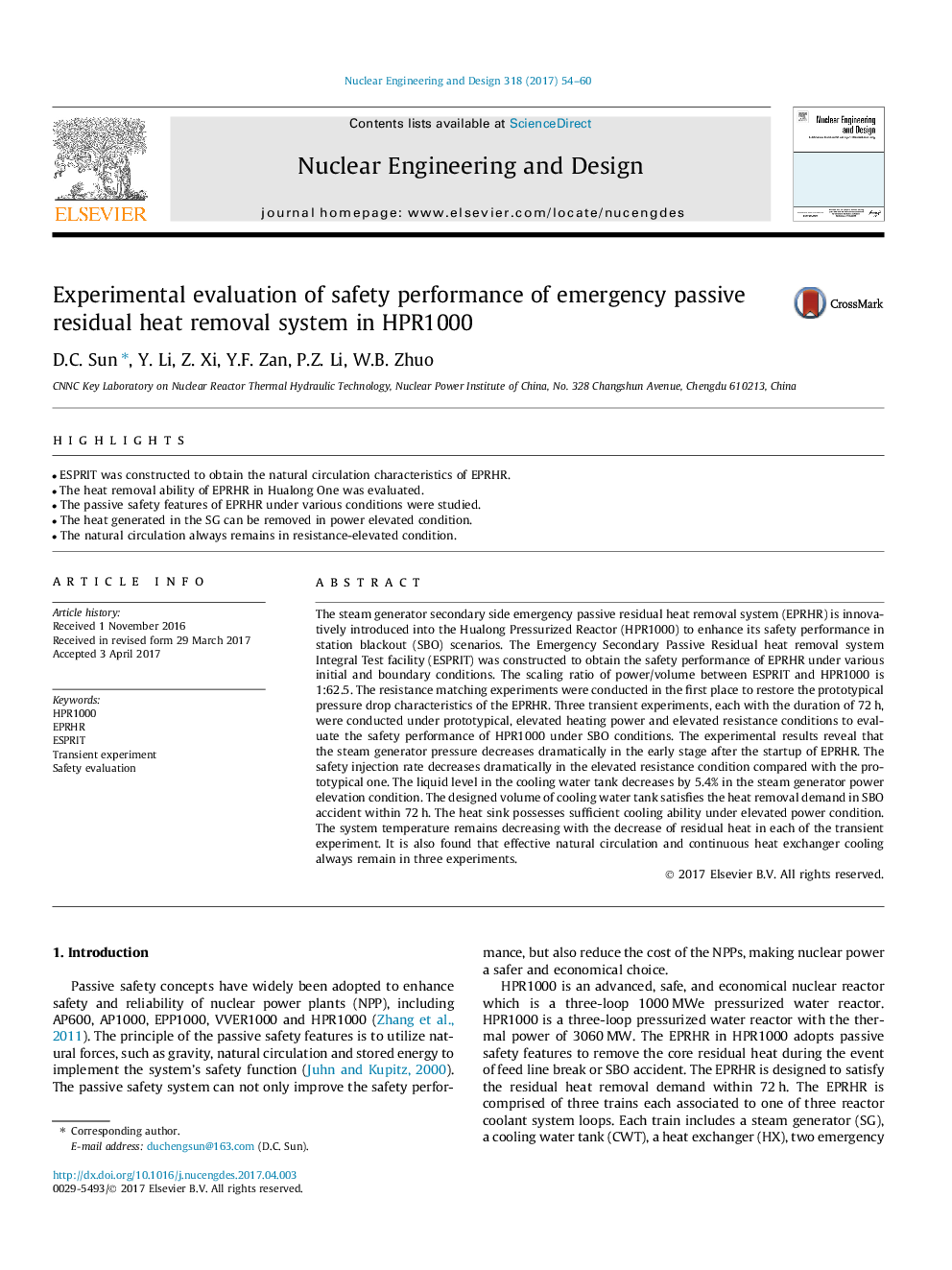| کد مقاله | کد نشریه | سال انتشار | مقاله انگلیسی | نسخه تمام متن |
|---|---|---|---|---|
| 4925488 | 1431403 | 2017 | 7 صفحه PDF | دانلود رایگان |
عنوان انگلیسی مقاله ISI
Experimental evaluation of safety performance of emergency passive residual heat removal system in HPR1000
دانلود مقاله + سفارش ترجمه
دانلود مقاله ISI انگلیسی
رایگان برای ایرانیان
موضوعات مرتبط
مهندسی و علوم پایه
مهندسی انرژی
مهندسی انرژی و فناوری های برق
پیش نمایش صفحه اول مقاله

چکیده انگلیسی
The steam generator secondary side emergency passive residual heat removal system (EPRHR) is innovatively introduced into the Hualong Pressurized Reactor (HPR1000) to enhance its safety performance in station blackout (SBO) scenarios. The Emergency Secondary Passive Residual heat removal system Integral Test facility (ESPRIT) was constructed to obtain the safety performance of EPRHR under various initial and boundary conditions. The scaling ratio of power/volume between ESPRIT and HPR1000 is 1:62.5. The resistance matching experiments were conducted in the first place to restore the prototypical pressure drop characteristics of the EPRHR. Three transient experiments, each with the duration of 72Â h, were conducted under prototypical, elevated heating power and elevated resistance conditions to evaluate the safety performance of HPR1000 under SBO conditions. The experimental results reveal that the steam generator pressure decreases dramatically in the early stage after the startup of EPRHR. The safety injection rate decreases dramatically in the elevated resistance condition compared with the prototypical one. The liquid level in the cooling water tank decreases by 5.4% in the steam generator power elevation condition. The designed volume of cooling water tank satisfies the heat removal demand in SBO accident within 72Â h. The heat sink possesses sufficient cooling ability under elevated power condition. The system temperature remains decreasing with the decrease of residual heat in each of the transient experiment. It is also found that effective natural circulation and continuous heat exchanger cooling always remain in three experiments.
ناشر
Database: Elsevier - ScienceDirect (ساینس دایرکت)
Journal: Nuclear Engineering and Design - Volume 318, July 2017, Pages 54-60
Journal: Nuclear Engineering and Design - Volume 318, July 2017, Pages 54-60
نویسندگان
D.C. Sun, Y. Li, Z. Xi, Y.F. Zan, P.Z. Li, W.B. Zhuo,